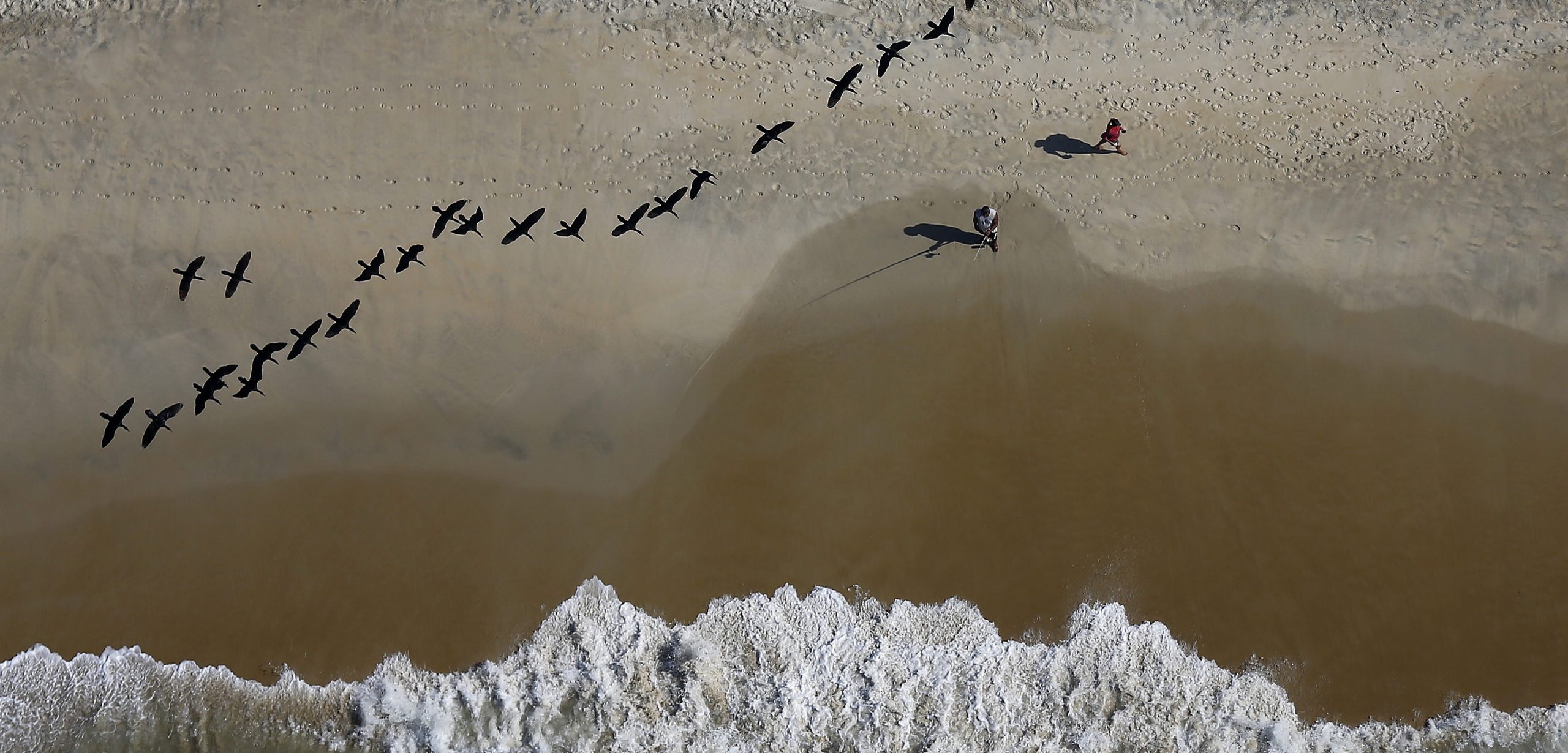Saving São Paulo’s Shorebirds
Brazil is on a push to protect its migrant shorebirds.
Article body copy
Once a week for five summers, César Cestari rode his bike up and down the beautiful beaches of Itanhaém and Peruíbe in southern Brazil. Cestari hadn’t come to exercise or to enjoy the sun and salty air, he was there to watch as two very different kinds of tourists fought over the future of the cities’ sandy shores.
Some of the tourists Cestari saw from 2009 to 2013 were those you’d expect: surfers and families building sandcastles. The others were different. They’d just flown in, and were looking for a bite to eat and a place to relax. Despite being in one of the most rapidly developing countries in the world, these visitors wouldn’t find what they were after. These out-of-towners were scared by the crowds and flew off, searching for a quieter spot.
Every year, shorebirds such as the American golden plover, red knot, ruddy turnstone, and white-rumped sandpiper fly thousands of kilometers from the Arctic to South America, stopping along the way to rest and feed. Brazil’s São Paulo state is the most populous part of South America, and its beaches are also important for migrating shorebirds. Yet as São Paulo’s coastal areas urbanize and tourism increases, visiting birds are finding their stopover sites increasingly crowded.
In 2012, the Brazilian government developed a national conservation plan to increase and protect this critical habitat—the first shorebird management program in South America. Over the past few years the project has seen some success, yet many programs have failed to get off the ground, having been held back by operational or financial difficulties.
Standing out are the government institute for biodiversity conservation’s efforts to engage tourists directly with environmental education programs and social marketing campaigns.
Last year the department held two festivals to draw attention to the beaches’ migrant visitors, and to get local governments and the public involved in conservation efforts. One of these was the Brazilian Migratory Bird Festival held in Lagoa do Peixe National Park, a critical stopover site for thousands of birds. The festival included lectures and workshops on bird ecology and conservation, climate change, bird watching and photography, citizen science projects, and ecotourism. Some of the institute’s collaborators are planning other outreach projects that focus on the country’s rural indigenous and traditional communities.
Among the plan’s other successes are new protocols, implemented last year, for licensing the development of wind-power plants in areas important to migratory birds. These protocols mandate the completion of environmental impact assessments, environment impact reports, and public hearings for proposed wind power projects along the birds’ regular migratory routes and in areas they use for feeding and breeding.
Brazil is a country in a state of radical transformation. Since recovering from the late 2000s global financial crisis, its coastal areas have seen significant development and urban growth driven by growing tourism and wind-power industries, and a rush to exploit recently discovered offshore oil reserves. Yet the country is hoping to avoid some of the growing pains that other industrialized nations have experienced, especially in regard to the effects on wildlife.
“We live in Brazil in a time of development of many new economic projects and activities, mainly related to power generation, that can affect important sites if no care is taken,” says Danielle Paludo, the plan’s coordinator and an environmental analyst at a national center for wild bird conservation and research. “The joint efforts promoted by the conservation plan are very important for optimizing and directing efforts in Brazil, but there are many things to do.”
During his bike rides, Cestari watched how, in response to coastal development, birds spent less time feeding and resting and more time moving around looking for places where they won’t be bothered. With every disturbance, the birds lose out on storing energy for their long-distance flights. Already, urbanized beaches and throngs of vacationers have caused migratory birds to all but abandon areas further north up the Brazilian coast. Without the current plans to protect the beaches in the south, these birds may be left with no rest stops to visit.

